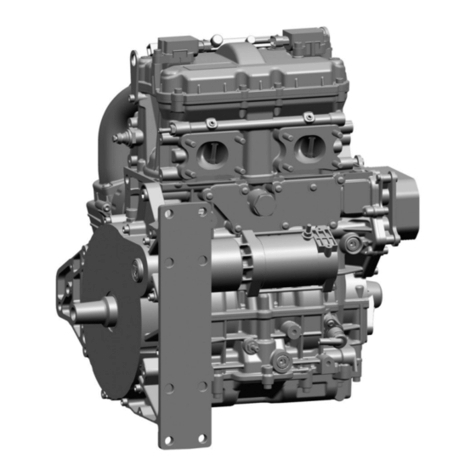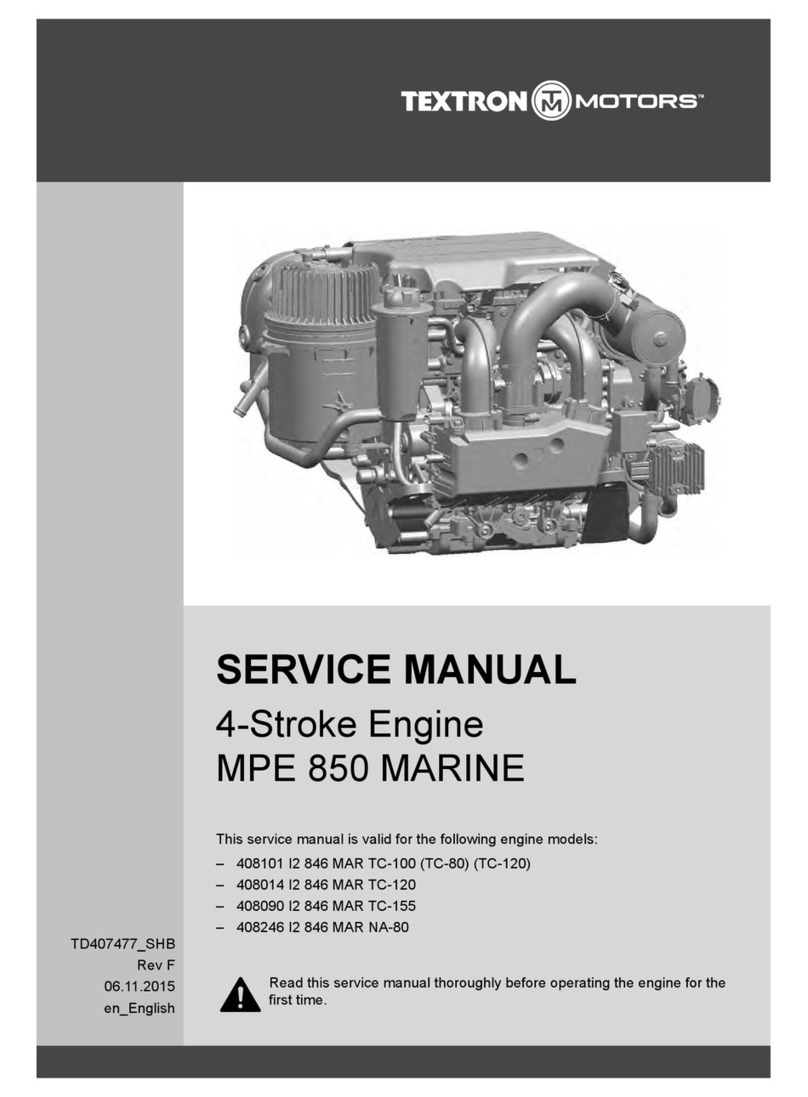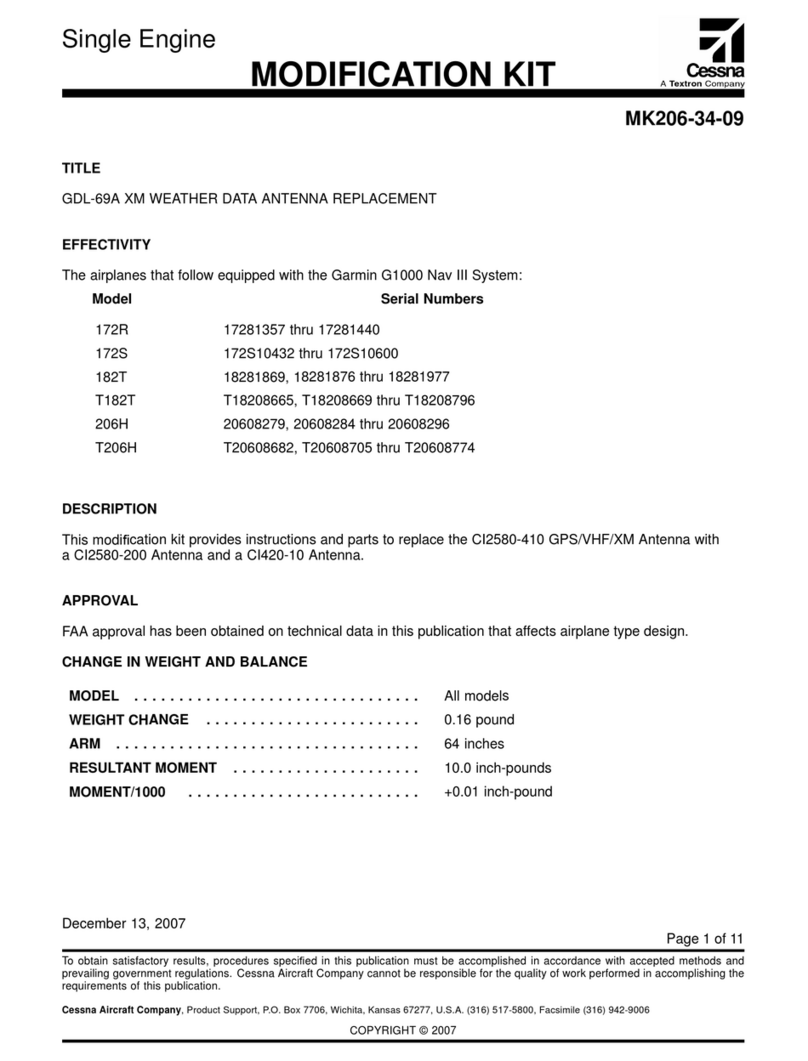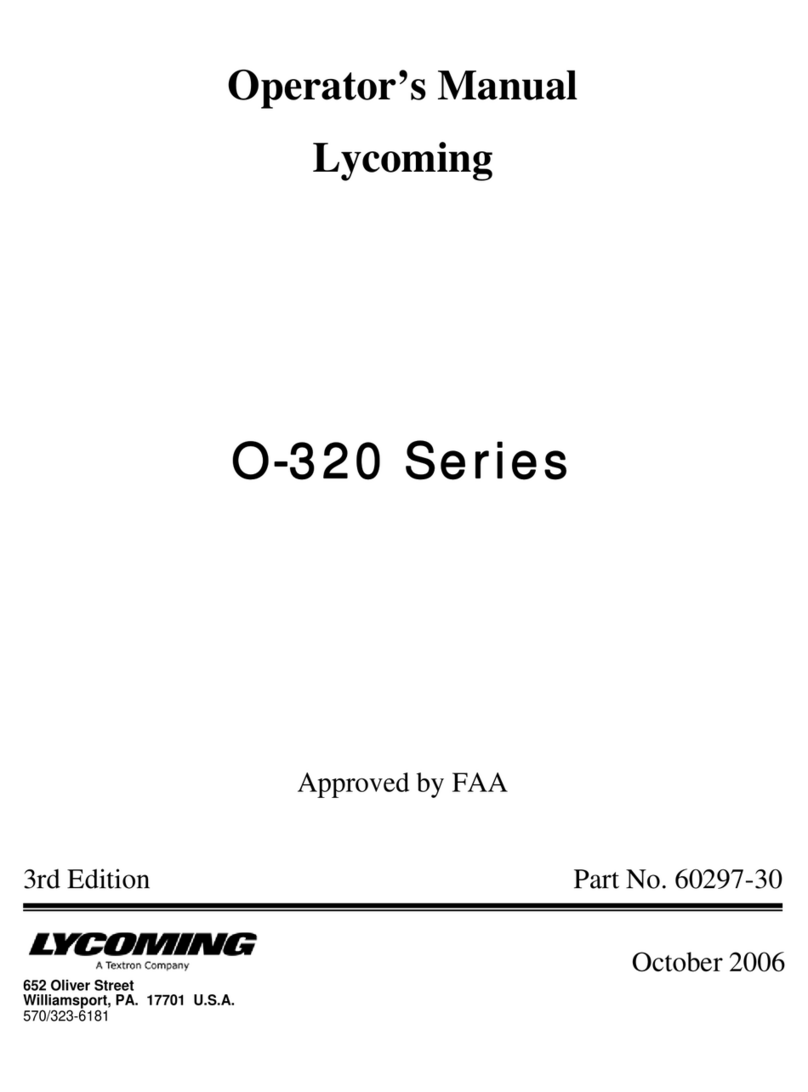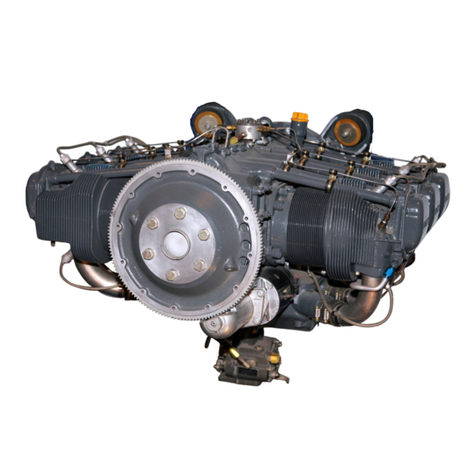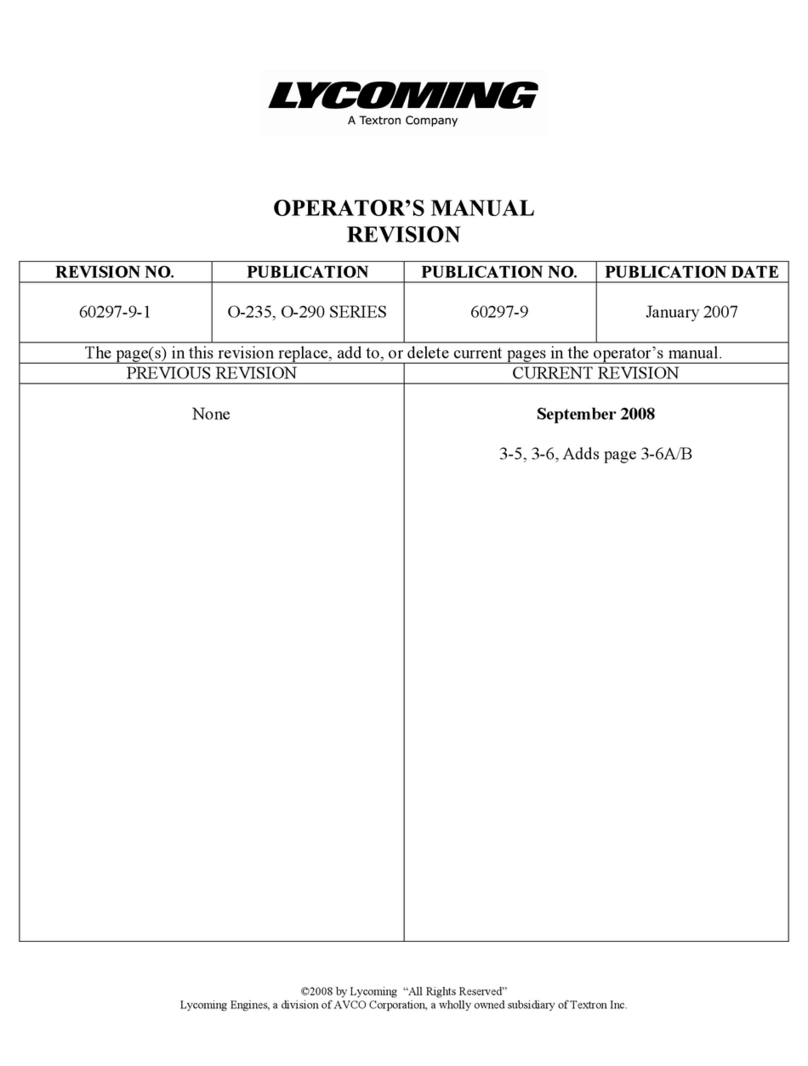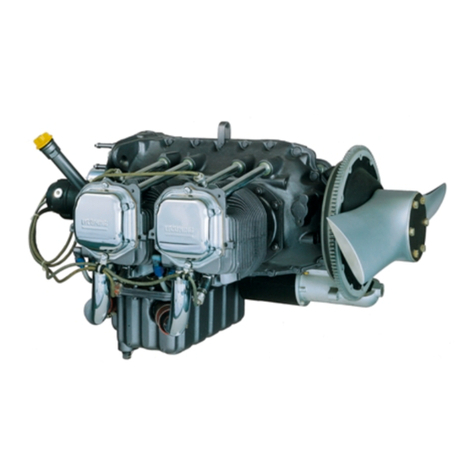
SECTION 1 LYCOMING OPERATOR’S MANUAL
DESCRIPTION O-360 AND ASSOCIATED MODELS
Connecting Rods – The connecting rods are made in the form of H sections from alloy steel forgings.
They have replaceable bearing inserts in the crankshaft ends and bronze bushings in the piston ends. Two
bolts and nuts through each cap retain the bearing caps on the crankshaft ends.
Pistons – The pistons are machined from an aluminum alloy. The piston pin is of a full floating type with a
plug located in each end of the pin. Depending on the cylinder assembly, pistons may be machined for either
three or four rings and may employ either half wedge or full wedge rings. Consult the latest revision of
Service Instruction No. 1037 for proper piston and ring combinations.
Accessory Housing – The accessory housing is made from an aluminum casting and is fastened to the rear of
the crankcase and the top rear of the sump. If forms a housing for the oil pump and the various accessory
drives.
Oil Sump (Except AIO Series) – The sump incorporates an oil drain plug, oil suction screen, mounting pad
for carburetor or fuel injector, the intake riser and intake pipe connections.
Crankcase Covers (AIO Series) – Crankcase covers are employed on the top and bottom of the engine.
These covers incorporate oil suction screens, oil scavenge line connections. The top cover incorporates a
connection for a breather line and the lower cover a connection for an oil suction line.
Cooling System – These engines are designed to be cooled by air pressure. Baffles are provided to build up a
pressure and force the air through the cylinder fins. The air is then exhausted to the atmosphere through gills
or augmentor tubes usually located at the rear of the cowling.
Induction System – Lycoming O-360 and HO-360 series engines are equipped with either a float type or
pressure type carburetor. See Table 1 for model application. Particularly good distribution of the fuel-air
mixture to each cylinder is obtained through the center zone induction system, which is integral with the oil
sump and is submerged in oil, insuring a more uniform vaporization of fuel and aiding in cooling the oil in
the sump. From the riser the fuel-air mixture is distributed to each cylinder by individual intake pipes.
Lycoming IO-360, AIO-360, HIO-360 and TIO-360 series engines are equipped with a Bendix type RSA
fuel injector, with the exception of model IO-360-B1A that is equipped with a Simmonds type 530 fuel
injector. (See Table 1 of model application.) The fuel injection system schedules fuel flow in proportion to
air flow and fuel vaporization takes place at the intake ports. A turbocharger is mounted as an integral part
of the TIO-360 series engines. Automatic waste gate control of the turbocharger provides constant air
density to the fuel injector inlet from sea level to critical altitude.
A brief description of the carburetors and fuel injectors follows:
The Marvel-Schebler MA-4-5 and HA-6 carburetors are of the single barrel float type equipped with a
manual mixture control and an idle cut-off.
The Marvel-Schebler MA-4-5AA carburetor is of the single barrel float type with automatic pressure
altitude mixture control. This carburetor is equipped with idle cut-off but does not have a manual mixture
control.
The Bendix-Stromberg PSH-5BD is a pressure operated, single barrel horizontal carburetor, incorporating
an airflow operated power enrichment valve and an automatic mixture control unit. It is equipped with an
idle cut-off and a manual mixture control. The AMC unit works independently of, and in parallel with, the
manual mixture control.
1-2
